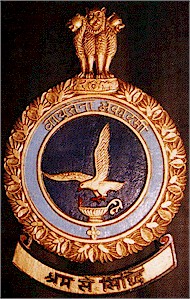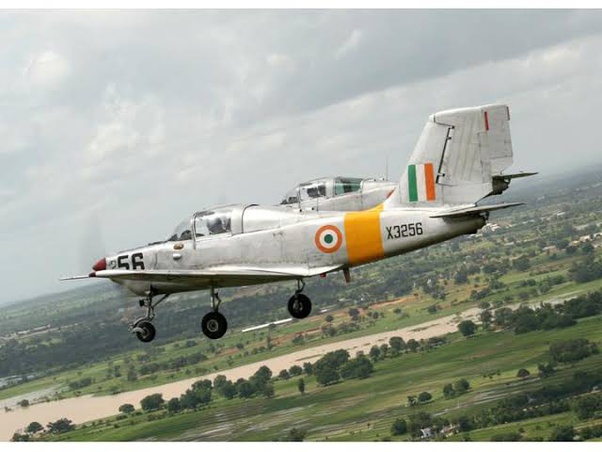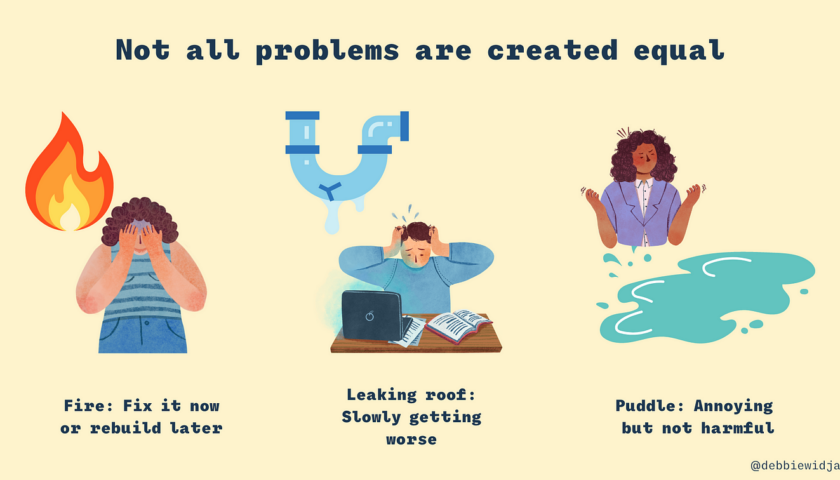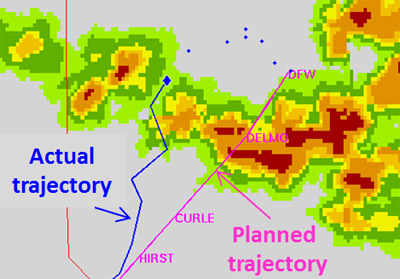“Sometimes, flying feels too God-like to be attained by man. Sometimes, the world from above seems too beautiful, too wonderful, too distant for human eyes to see.”
Charles A. Lindbergh
Growing up in India in the 1980s that too in tier II city, I would have been lucky if I got a chance to travel on a plane. Almost every child I had met, dreamt about becoming a pilot. Maybe this was just because we wanted to fly and reach the clouds above, or because we saw in cartoons and movies how wonderful the flight experience is. This goal seemed to be too big and non-affordable for most of us as compared to other fields of studies. In this article, I will talk about my initial flight training, first flight and subsequent solo flight. Perhaps it will encourage someone to move forward and go after their dream!
Initial Training
It is not like you arrive a little early, look around meet your instructor, and walk with your instructor to the aircraft for a flight. It was a long long wait for the first flight as a trainee pilot. We underwent 3 years of gruelling military training and academics at the National Defence Academy. After graduation, we reached the Air Force Academy and it was not just any flight school.

Indian Air Force Academy, Dundigal located 43 km from Hyderabad was established in 1969 and started operations in 1971. The academy was set up to train cadets from all streams at one location. It imparts training to the flying, technical and ground duty branches as well as officers of the Indian Navy & the Indian Coast Guard. The academy imparts specialist training to young men and women who shoulder responsibility as leaders in other areas of air force operations. These are administrative, air controlling, meteorological, logistics, accounts and education branches. Apart from branch-specific training, flight cadets are also trained in outdoor skills, like Drill, PT and games. The emphasis in AFA is on leadership and domain knowledge. Life in AFA is all about learning discipline and strive for self-improvement.

Our training started from Day-1 along with the good measure of outdoor activities. The first week we underwent technical type training on HPT-32 aircraft. Once we passed the aircraft specific exam we were introduced to Standard Operating Procedures·(SOPs), Checklists, Pre-flight and Post-flight documentation, Radio Telephony procedures, Airmanship (Regulations), Aviation Meteorology and·Aircraft familiarization. Once the basics were through, we faced a Gen Test, wherein even a single mistake was not admissible. There were no simulators in that era and all the training and proficiency check was done in the morning briefing session. It was a simple and effective method. The flight instructors would ask volley of questions ranging from SOP, Checklists, emergency procedures, Radio Telephony procedures or technical gen. It was the most dreaded time and in the end, the briefing room looked like a battered battlefield.
Air Experience or First Flight
What can you expect on your first training flight?
The first flight as a trainee Pilot is known as Air Experience. You are not supposed to do anything. Just sit back and enjoy the flight. Having gone through all the debilitating morning briefing sessions I for sure wanted to impress my instructor with all my knowledge. As the engine started, I soon realize that all the checks and procedures have abandoned me and gone astray. The instructor handed me controls to simply taxi straight and follow the taxi line. But to my utter dismay, I was unable to do that also. The aircraft just would not obey me reminding me of my first day at the equestrian line in NDA. The helmet and the oxygen mask became more and more uncomfortable with every passing minute. The sound, vibrations numbed my senses and I was bundle of nerves. I was bewildered how could my instructor handle so many things at a time and that too effortlessly. It was time for line up and take-off. Of course, my instructor did the take-off. He did all the checks and smoothly advance power lever and the aircraft started rolling over the runway maintaining centre line. I could feel the transition of aircraft from a ground vehicle to air vehicle as speed increased. There was a change in vibration of aircraft as the wheels lifted off but I was not sure. The perspective changed but I wanted everything to go slow or maybe pause. It was supposed to be an exciting and exhilarating experience, a feeling of freedom.

But here I was trying to catch up with what the aircraft was doing. Where was I? The instructor was meticulously carrying out checks, following procedures and communicating on the radio as well as with me. He was guiding me and explaining patiently. Once at a safe altitude and in the sector, he allowed me to take over the controls for a bit, just to let me get a feel for the aircraft. It was time for some aerobatic manoeuvres. In simple terms, it felt like a roller coaster ride. My head was rolling and I was disoriented. The instructor got the aircraft straight and level which helped me a bit. It was time to head back to the airport. After landing, the instructor was fully aware of my condition which is very normal during the first few flights. Once on terra firma, I was feeling much better. The instructor debriefed me on the flight and provided more information and instruction about the flight. And now………..my flying career had officially begun!
“When once you have tasted flight, you will forever walk the earth with your eyes turned skyward, for there you have been, and there you will always long to return.”
Leonardo DaVinci
My First Solo
After a few more sector flights and circuit flying sorties; I was put-up for the ‘solo check’. Believe me, it was the most paramount test that I have ever faced. The military flight training unlike civil flight training is time-bound and a trainee has to reach minimum acceptable standards before being progressed further. If a trainee does not meet those standards then they are re-flighted which meant that they had to change over to other branch duty like administration or logistics. The rejection rate varied between 20-30% and the solo check was the first bottleneck to be crossed. We were about 90 aspiring pilots. All of us going through the trial and each as motivated as others to succeed.
Flight Instructors had done their job well. They had made us fly a lot of circuits and landing. We had been debriefed extensively on each circuit. It was common for debrief to last longer than flight duration. All of us were doing ‘chair flying’. From the simple start of the engine, taxi, take-off and landing to the engine switch off; every aspect was scrutinized along with aviation knowledge, situational awareness, airmanship and discipline.

It was time. The solo check went well. The Chief Flying Instructor (CFI) consented to send me solo after stipulated 5 touch and go’s and a full stop landing all by myself. During taxi back he debriefed and said over the radio frequency: ”Academy Tower, Running change 214 will go for solo”. I knew I was going to be solo!
The CFI before leaving the aircraft wished me good luck. I taxied all alone towards the runway, took a deep breath and told the tower: ”Academy Tower 214, ready for take-off”. Another deep breath, I set take-off power, checked all my engine parameters, the plane started to move. I said all callouts out loud, even though there was nobody that could hear me. I was all alone on the aircraft. At the rotation speed, I slowly pulled the control stick, the plane lifted off the ground. I made a left turn to stay in the traffic pattern, I looked down at the runway where I just took off and all I could do was SMILE. I looked to the right, where my instructor used to sit, but the seat was empty. It was me flying a real aeroplane, with nobody next to me, but there was no time to rejoice. I was falling back and I could not let that happen.
I made a near-perfect circuit pattern, with all mandatory checks and procedures. I did two low overshoots and did a final full stop landing and taxied back. While I brought the aircraft to complete stop at the flight line and switched off, I felt proud. My very first solo. I did it. It felt so empowering, I was so proud of myself and all the studying had been so worth it.
Through this long journey of about 28 years, there have been moments when I have been sometime careless, little distracted, or overconfident. This can be a death sentence for a pilot. I have been lucky to survive a lot of situations that many others weren’t so lucky to make it. I don’t think I possess any skill that anyone else doesn’t have. As a pilot, we often talk about flying in terms of achievements or destinations. But it is the inner journey of self-fulfilment, consciousness and awareness that defines you.
Always marching in step with your sole.
“There is no such thing as a natural-born pilot. Whatever my aptitudes or talents, becoming a proficient pilot was hard work, really a lifetime’s learning experience. For the best pilots, flying is an obsession, the one thing in life they must do continually. The best pilots fly more than the others; that’s why they’re the best. Experience is everything.”
Chuck Yeager, first pilot to break the sound barrier
Related article: My First Air Travel Experience. Click to read.
Related article: Flight Instructors. Click to read.



